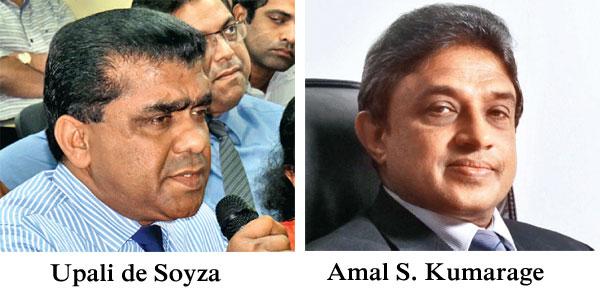
While the Hambantota Port is likely to take at least 10 to 15 years to be on par with the Colombo Port for transshipment business, in the meantime the strategically located Port has possibilities of providing a relay service by tying up with a major shipping line, a senior maritime industry official said. According to Director, Logistics at the Sri Lanka Ports Authority (SLPA), Upali de Soyza the Hambantota Port is...
...located in the centre of the transshipment hub that can relay transshipment cargo to the Gulf, African and South African ports.
“In the case of transshipment, connectivity is very important.
We will need better feeder network and a regular network.
At present, we have all the major shipping lines in the world calling on Colombo and to come to that position, Hambantota will take about 10 to 15 years,” said de Soyza.
The official’s comments came during a panel discussion on ‘The Past, Present and Future of Sri Lanka’s Geo Position and International Trade’ organized by the Sri Lanka Society of Transport and Logistics (SLSTL) in collaboration with the Sri Lanka Association for Political Economy (SLAPE) and Departments of History, Economics, Geography and International Relations of University of Colombo.
“The Chinese company’s plan is to promote industries through the industrial zone in Hambantota and to generate more volumes.
If not, there is a possibility of having a relay service by a major shipping line from Hambantota.
Until then, Colombo will be the major commercial port in Sri Lanka,” the Director Logistics at SLPA emphasised.
Meanwhile, answering a question posed by a member of the public as to why the Hambantota Port has not been able to attract ships, Senior Professor of the Department of Transport and logistics Management at the University of Moratuwa, Prof. Amal S. Kumarage said an analysis of historic development of trade showed that transport technology has been disruptive from the era of the ancient Silk Road.
“Probably that is changing yet again through technology, because now we have ships that no longer need to call at the first port they see.
They can go from beginning to end without calling anywhere,” he said. He noted that just because Hambantota is in the middle of the route, ships have no reason to call, unless Sri Lanka provided something valuable to them such as ‘value addition or economic activity’ for people passing by. During the seminar, a paper titled ‘New Archaeological Data on Sea-Borne and Inland Trade of Ancient Sri Lanka and Maritime Diffusion of Buddhist Philosophies and Art’ was presented by Professor Osmund Bopearachchi of University of California, Berkeley, USA.
Bopearachchi is the Adjunct Professor of Central and South Asian Art, Archaeology, and Numismatics, University of California, Berkeley and Emeritus Director of Research of the French National Centre for Scientific Research (C.N.R.S.-E.N.S. Paris) and former Visiting Professor and Member of the Doctoral School VI of the Paris IV-Sorbonne University.
